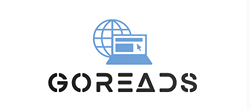In the fast-paced world of software development, keeping track of changes, updates, and bug fixes can be a challenging task. With multiple team members working on different features and modules, it’s crucial to have an organized system in place to ensure smooth collaboration and effective communication.
This is where a changelog tool comes into play. A changelog tool is a valuable asset that can help streamline your development process, improve productivity, and enhance the overall quality of your software. In this blog post, we will explore the benefits of using a changelog tool and how it can transform your development workflow.
What is a Changelog?
Before diving into the benefits of a changelog tool, let’s first understand what a changelog is. A changelog is a document or record that lists all the changes, updates, and bug fixes made to a software application or project.
It serves as a comprehensive log of all modifications made over time and provides a clear overview of the development progress. A well-maintained changelog is an essential tool for developers, project managers, and stakeholders to stay informed about the latest developments and ensure smooth collaboration.
Benefits of a Changelog Tool
- Improved Communication: A changelog tool facilitates effective communication among team members. It serves as a central repository where developers can document and share information about the changes they have made. This ensures that everyone is on the same page and reduces the chances of miscommunication or duplication of work.
- Enhanced Collaboration: When multiple developers are working on the same project, it’s crucial to have a streamlined collaboration process. A changelog tool allows developers to track and manage their contributions, making it easier to coordinate efforts and avoid conflicts. It promotes a collaborative environment where developers can discuss changes, provide feedback, and resolve issues efficiently.
- Transparency and Accountability: With a changelog tool like Saasfe, it becomes easier to track the progress of the project and hold team members accountable for their work. Developers can document their changes in the changelog, including relevant details such as the purpose of the change, the affected modules, and any associated issues. This level of transparency helps in identifying bottlenecks, resolving conflicts, and ensuring that everyone is working towards a common goal.
- Effective Release Management: A changelog tool plays a crucial role in managing software releases. It allows developers to organize and categorize changes based on their significance, such as bug fixes, feature enhancements, or performance improvements. This categorization helps in creating release notes that can be shared with users, providing them with a clear understanding of what has changed in the new version. It also enables developers to prioritize and plan future releases based on user feedback and requirements.
- Historical Reference and Documentation: A well-maintained changelog serves as a historical reference for the development process. It provides a detailed account of all the changes made to the software, which can be invaluable when troubleshooting issues, conducting post-mortems, or understanding the evolution of the project over time. Additionally, a changelog can also serve as documentation for future developers who join the project, enabling them to quickly grasp the context and understand the rationale behind previous decisions.
Choosing the Right Changelog Tool
Now that we understand the benefits of a changelog tool, it’s important to choose the right one for your development process. Here are a few factors to consider when selecting a changelog tool:
- Integration: Ensure that the changelog tool integrates seamlessly with your existing development tools and workflow. Look for options that support popular version control systems like Git, as well as project management platforms.
- Ease of Use: The tool should be user-friendly and intuitive, allowing developers to quickly add and manage changelog entries without any hassle. A clutter-free interface and simple workflows can significantly enhance productivity.
- Customization: Different projects may have unique requirements when it comes to changelog formatting and organization. Look for a tool that offers customization options, allowing you to tailor the changelog to suit your specific needs.
- Collaboration Features: A good changelog tool should facilitate collaboration among team members. Look for features like comments, notifications, and integration with communication tools to promote efficient collaboration.
Conclusion
In the world of software development, a changelog tool is an indispensable asset for streamlining the development process. It enhances communication, improves collaboration, promotes transparency, and facilitates effective release management. Also read Wеbsitе Dеvеlopmеnt Coursеs in Lahorе
By implementing a changelog tool, you can ensure that your development team stays organized, productive, and focused on delivering high-quality software. So, consider integrating a changelog tool into your development workflow and witness the positive impact it can have on your projects.




